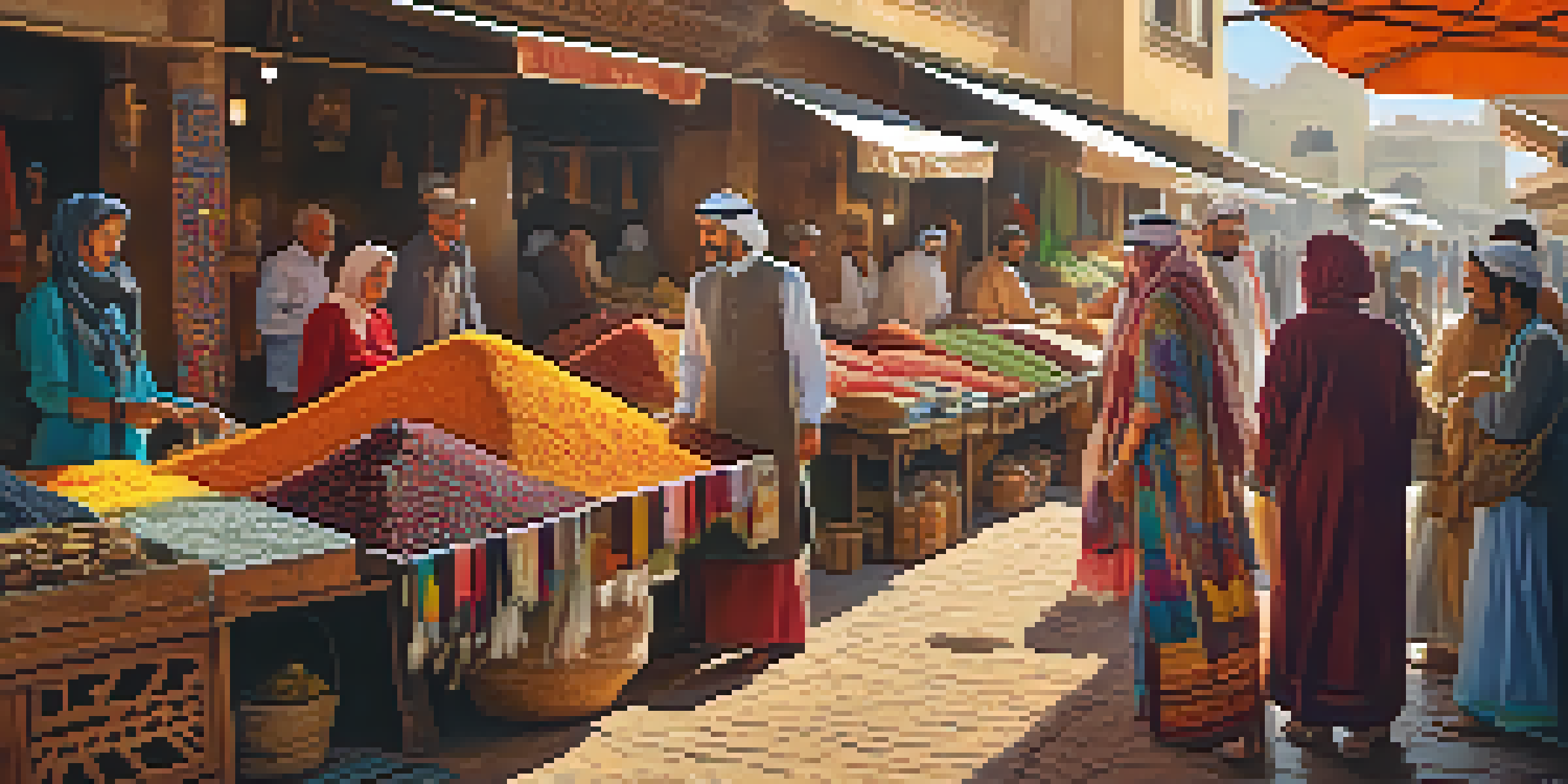Respecting Local Dress Codes: What to Wear When Traveling

Understanding the Importance of Local Dress Codes
When traveling, respecting local dress codes is crucial for many reasons. It shows appreciation for the culture and traditions of the places you visit. Additionally, dressing appropriately can help you blend in and avoid unwanted attention, allowing you to experience the local atmosphere more fully.
Traveling – it leaves you speechless, then turns you into a storyteller.
Different cultures have unique standards of dress, often influenced by history, religion, and climate. For instance, in many Middle Eastern countries, modest clothing is essential, while beach destinations may embrace more casual attire. Recognizing these differences helps foster mutual respect between travelers and locals.
Ultimately, adhering to dress codes can enhance your travel experience. It opens doors to deeper interactions with locals and often leads to more enriching cultural exchanges, making your journey all the more memorable.
Researching Destination-Specific Dress Codes
Before you pack your bags, doing a bit of research on your destination's dress codes can save you from potential faux pas. Many travel blogs, tourism websites, and social media platforms provide insights into what is considered appropriate attire in various regions. It's always a good idea to check these resources, especially for places with strict cultural norms.

For example, in countries like Japan, wearing shoes indoors is frowned upon, while in Italy, dressing up for dinner is a way to show respect to the dining experience. Understanding these nuances helps you prepare outfits that align with local customs and expectations.
Respect Local Dress Codes
Adhering to local dress codes demonstrates appreciation for the culture and enhances your travel experience.
By taking the time to learn about dress codes, you can avoid awkward situations and show that you respect the local culture. This proactive approach demonstrates a genuine interest in the community you’re visiting, which can lead to a more rewarding travel experience.
Packing Versatile and Respectful Clothing
When planning your wardrobe for a trip, versatility is key. Consider packing clothing items that can be mixed and matched to suit different occasions while respecting local dress codes. For example, a lightweight cardigan can be worn over a tank top for visits to religious sites, where modesty is important.
The journey not the arrival matters.
Choosing neutral colors and simple patterns can also help your outfits blend in with the local style. Items that are easy to layer not only provide flexibility but also cater to varying climate conditions, allowing you to adapt your look as needed.
Remember that comfort should not be sacrificed for style. Opt for breathable fabrics that allow you to enjoy your travels without feeling restricted, making your exploration more enjoyable while still honoring local customs.
Navigating Religious and Cultural Sites
When visiting religious or cultural sites, dressing appropriately is especially important. Many places of worship have strict dress codes that require visitors to cover their shoulders, arms, and legs. Researching these requirements in advance can help you avoid being turned away at the entrance.
For example, when visiting a mosque, women may need to wear a headscarf, while men should avoid shorts. It’s always a good idea to carry a light scarf or shawl in your bag, which can be used to cover up if needed. This small gesture shows respect and understanding of local customs.
Research Before You Pack
Understanding destination-specific dress norms can help you avoid cultural faux pas and prepare appropriately.
Being mindful of these dress codes not only reflects your respect for the culture but also enhances your experience. It allows you to engage more meaningfully with the sites you visit, deepening your appreciation for their significance.
Dressing for Hot and Cold Climates
Climate plays a significant role in determining what to wear while traveling. In tropical regions, lightweight and breathable clothing is essential for staying cool and comfortable. Fabrics like cotton and linen are ideal, as they allow for airflow and wick moisture away from the skin.
Conversely, when traveling to colder destinations, layering becomes crucial. A good base layer, insulating middle layer, and waterproof outer layer can help you adapt to changing temperatures while ensuring you respect any local dress codes. A well-thought-out wardrobe can make all the difference in your travel experience.
Regardless of the climate, always remember to consider local customs. For example, in some cultures, even in hot weather, modesty is valued, so it’s essential to find a balance between comfort and cultural respect.
Using Accessories to Enhance Your Outfit
Accessories can be a fantastic way to respect local dress codes while maintaining your personal style. They can transform a simple outfit into something culturally appropriate without the need for a complete wardrobe overhaul. For instance, adding a scarf can elevate your look and serve as a modesty cover when needed.
Jewelry can also be a great addition, but be mindful of the cultural significance of certain items. In some cultures, specific symbols may carry deep meanings, so it's worth researching what to wear and what to avoid. This thoughtfulness can help you navigate the complexities of local customs.
Observe Locals for Guidance
Learning from locals by observing their attire can provide valuable insights into cultural expectations and norms.
Ultimately, accessories allow you to express yourself while respecting the local culture. They can also serve practical purposes, such as sun protection or adding warmth, making them an essential part of your travel attire.
Learning from Locals: Observing Dress Norms
One of the best ways to learn about local dress codes is to observe the locals. Take note of how people dress in different settings, such as markets, restaurants, and religious sites. This practice can provide valuable insights into the cultural expectations and norms of the area you’re visiting.
Engaging with locals can also offer tips on appropriate attire for specific occasions. Many people are willing to share their customs and preferences, which can help you navigate the intricacies of local fashion. Plus, this engagement enriches your travel experience by fostering connections with the community.

Ultimately, being observant and open-minded can lead to a more authentic travel experience. By adapting your wardrobe to reflect local norms, you not only show respect but also create opportunities for meaningful interactions and memories.